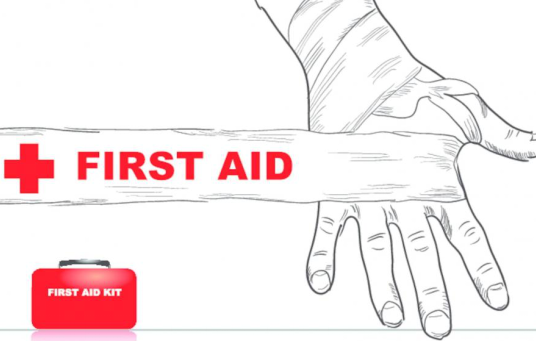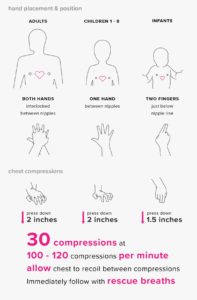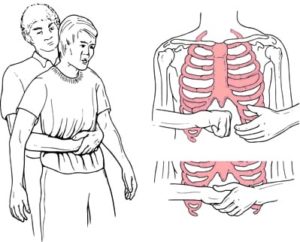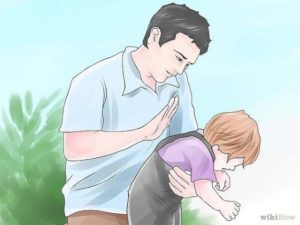The term ‘First Aid’ is common among many people in our society but not enough is known about this simple life saving process. The term simply means first series of steps taken to prevent injuries from becoming worse, relieve pain and eventually keep the patient alive until professional medical care is available for the casualty. The person who suffers the injury is referred to as casualty.
Many deaths recorded from injuries from different kinds of accidents and violent hostilities could have been averted if first aids had come to the casualties in good time. Although some people are specially trained and are certified to deliver first aid but it is essential for all of us to acquire basic knowledge of first aid as we might be the first to be at an accident site and see the accident victim. Never assume this cannot happen to you!!!! First aid is needed for cases ranging from a knife cut in the kitchen, a fall on the football field to accident on the highway.
Death from sudden ill health complications could also be averted if people around the victims have basic knowledge of first aid. We all can save lives if we are familiar with the basic first aid procedure. Just before we go into first aid procedure let’s put first aid into proper perspective.
AIMS OF FIRST AID.
- To save life: rendering first aid to victim immediately after an accident can be crucial in saving such a person. A victim bleeding after an accident can bleed out within some minutes. If such bleeding can be arrested with first aid, such a person has a chance at survival.
- To prevent illness or injury from becoming worse: First aid rendered to a victim can limit the progression of certain illness or injuries to a critical level.
- To relief pain: first aid given to a casualty can help relieve pain pending the time the victim will get proper medical care. A person who has suffered a sprain injury can get analgesics (topical or tablets) to relieve the pain before getting proper medical care.
QUALITY OF A GOOD FIRST AIDER.
- Basic knowledge of first aid: To be able to deliver first aid effectively, one must acquire basic knowledge of first aid. This will help you know what to do in certain conditions.
- Composure: A first aider must be composed to be able to deliver efficient care.
- Good judgment: You must be able to judge when to interfere and when to run for safety. You must also be able to sort out casualties according to their needs.
- Good reflexes: you must be able to carry spontaneous, yet appropriate actions.
FIRST AID KITS.
These are set of materials (equipment and medications) that is used to administer first aid. The contents vary from place to place and the setting in which they are needed. Some kits come in plastic boxes while others are in fabric pouches. In any case, the container must be clean, water proof and in colour green with a white cross for easy identification.
Contents include materials such as mask, tweezers, adhesive bandage, disposable gloves, guaze, scissors, syringe, disinfectant, antiseptic wipes, face shield, sterile dressing pack, cotton balls and medications like pain relief, oral rehydration salts, hydrogen peroxide. Some advanced kits contain airway devices, bag valve mask, sphygmomanometer and stethoscope.
GENERAL PRINCIPLES OF FIRST AID.
General principle of first aid in casualty case include the ABC guidelines.
- Airway (A): This principle ensures that the airway is potent and there is nothing blocking the pathway. You ensure this by checking the mouth and nostrils for any foreign body. Use a clean handkerchief to clear any foreign body such as sand, blood clots from the mouth and nostrils. Slightly extend the neck and turn the head of the victim to the side to prevent the tongue from falling back and blocking the airway. In an unconscious patient, use a clean, flat device to hold the tongue in place.
- Breathing (B): Check if the victim is breathing. You can check this by observing elevation and falling of the chest as the patient breathes in and out respectively. You can feel for passage of air with your finger from the mouth or nostrils. In cases where patient is not getting air, there is a need for a mouth-to-mouth breathing. In case where airway devices are available, they can be used to assist breathing but when they are not available, a mouth-to-mouth breathing will do. It is advised that the first aider place a clean medium (handkerchief) as barrier for protection.
- Circulation (C): This accesses the function of the heart. The heart is responsible for circulating blood round the body. This can be addressed by checking the pulse of the patient. The pulse can be felt in various places but commonly on the inner part of the forearm, few milimeters away from the base of the thumb. It is done by placing the inner surface of index, middle and ring finger in the described area to feel the radial pulse. When no pulse is felt, it means the heart has stop pumping blood round the body. Cardiopulmonary resuscitation (CPR) should be commended immediately. This involved a cycle of 30 chest compressions and 2 breathes. The compressions should be done with both hands interlocked and chest compressed to about 2 inches deep. One hand can be used for children between 1 to 8 years old. Children lesser than 1 year should be 2 fingers and compressions should be to about 1.5 inches.
CPR Procedure
COMMON EMERGENCY CASES AND WHAT TO DO.
- Bleeding: Apply direct pressure on the bleeding site. The pressure applied depend on how much the bleeding is and the source of the bleeding. Pressure to be applied ranges from placing a cotton wool on the site and holding it in place, placing an adhesive bandage, on tying a clean cloth or bandage over the wound. It might also require another pressure applied on a site before the bleeding site. Patient should be kept calm and the bleeding site raised above the chest if possible. In case of foreign body wedged into the body, do not remove such foreign body. Move patient to the hospital for further care.
- Nose bleeding: Sit the victim and tilt the head down a bit to avoid aspirating blood. Pinch the nose with two fingers for a long time to stop the bleeding. Move patient to the hospital if bleeding didn’t stop. If bleeding stops, patient to present at the hospital for further evaluation.
- Fracture: If the patient is bleeding from the fracture site, apply the principle of control bleeding. If not, try to limit motion at the fracture site. Stabilize the fracture and move patient to the hospital.
- Choking: A patient choking will be restless, gasping for air, holding his or her neck and lips and skin might start turning bluish. Encourage the victim to cough out, if this fails, follow it by about 5 slaps at the back. In case both techniques fail, Heimlich maneuver must be initiated immediately. Position yourself at the back of the patient, you may put a leg in between the patient’s legs for stability. Put a fist just above the navel and grab the fist with the other hand and apply a thrust targeted at the diaphragm. Check the victim’s mouth after every 5 thrust to see if the object has been expelled. Seek medical help.
Heimlich maneuver Helping a chocking child
- Sprain/Strain: Immobilize the area with the injury. Apply cold pack and compress with an elastic or conforming wrap. Move victim to the hospital.
- Fainting: This is a transient loss of consciousness due to several reasons. Circulation and breathing still intact. Remove all excessive or tight-fitting clothes. Put victim in a well-ventilated environment, put victim in position where lower extremities are higher than upper extremities to permit increased blood flow to the brain. Victim recovers within seconds to minutes.
- Cardiac arrest: A situation where a victim’s heart stops working. In this situation, the victim has no pulse. CPR must be initiated immediately…cycle of 30 compressions and 2 breathes. An automated external defibrillator (AED) can be used when available to deliver calculated electrical shock to restart the heart. AEDs are not readily available in the country. As the CPR is initiated, call for help and move patient to the nearest facility.
- Poisoning: Could be through the gas, food or animal bites. In the case of gas, quickly remove victim to an environment with fresh air, apply the ABC principle and move patient to the nearest hospital. For food poisoning, move victim to the hospital, carry along the food substance as it might give an idea of the poison ingested. For animal bite, tie the site of the bite, clean the bite wound, arrest bleeding if there is bleeding and move the victim to the hospital. Try and identify the offending animal if possible.
Cases requiring first aid are enormous and anybody can find themselves at the site of any accident and might be the first responder. The steps taken might be crucial to the survival of such victim. It is important we all keep ourselves up to date about first aid principles and how to go about delivering efficient first aid.
Source: Dr Emmanuel Abodunwa, FMC Lokoja
Publisher’s Note:
- Leave your comments in the comments box below and share the post
- Send your health- related articles, stories, tips to co*********@ya***.uk for free publication
- Like and share our Facebook page: @citizencomfortng






Thank u for this!
Useful information. Thank you.
This is very educative. Thank very much for sharing.
Please,I want to ask a two in one question. About two times now,my breathe seized from my sleep it was very difficult and painful for me to breath but after sometime was okay.The second experience is that of regular dizziness and sometimes everywhere feels like spinning. Please,I want to know the cause or causes of these and what to do to stop it.Thank you sir
Thanks for your time and comments on the blog. We sent your questions to Dr Emmanuel Abodunwa, one of our very resourceful resource persons. Find his professional response to the questions below:
The symptoms you described can be ascribed to a few conditions. Ill advise you visit your health care provider for basic screening such as blood pressure and some cardiovascular examination. -Dr Emmanuel Abodunwa
This message gives light to sustain and restore back life to accident victims on our roads, home and offices.this is fantastic, good health talk.may God grant citizencomfort more wisdom.how do we treat arthritis sudden sock on limbs or leg when on bed.or it’s shortage of blood.
Your question is not clear. But you can see your doctor for physical examination and consultation
This is wonderful, at least with first aid treatment lives will be saved. Thank you very much
Wow!
Imagine the various lives that could have been saved if we all had first aid knowledge. Thank you so much for such insightful article.
Very educative and insightful article.
Thanks to the chief Publisher